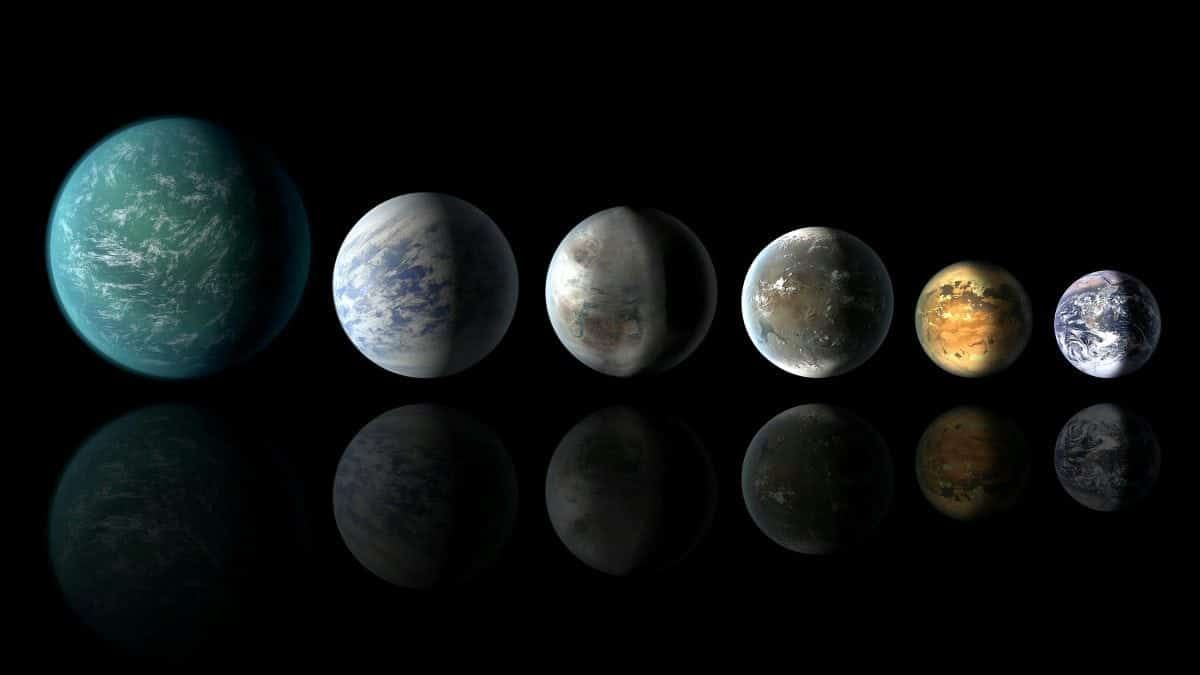
In a finding that will excite Sci Fi fans and those searching for signs of alien life forms, it has been revealed that one in three planets outside the solar system that are bigger than Earth is a waterworld, according to new research.
Scientists say that any ‘exoplanet’ that is two to four times the size of Earth are likely to contain the main ingredient for life – boding well for the search for habitable planets and alien life.
Analysis of data from the exoplanet-hunting Kepler Space Telescope and the Gaia mission indicates half their weight may be water – either flowing or frozen.
In comparison, the amount of water on Earth makes up just 0.02 per cent of its complete mass.
Lead researcher Dr Li Zeng, of Harvard University in the United States, said: “It was a huge surprise to realise that there must be so many water-worlds.”
So far the 4,000 confirmed or candidate exoplanets that have been discovered fall into two size categories.
They either have a planetary radius averaging around 1.5 or 2.5 times that of the Earth.
Now a group of international scientists have developed a model of their internal structure.
This is based upon their recent mass and radius measurements from the Gaia satellite.
Dr Zeng said: “We have looked at how mass relates to radius, and developed a model which might explain the relationship.”
The model indicates the smaller planets tend to be rocky planets – with typically five times as much mass as Earth.
The larger ones have about 10 times more mass – and “are probably water worlds,” said Dr Zeng.
Presenting the findings at the Goldschmidt conference in Boston, he explained:
“This is water, but not as commonly found here on Earth.
“Their surface temperature is expected to be in the 200 to 500 degree Celsius range.
“Their surface may be shrouded in a water-vapour-dominated atmosphere, with a liquid water layer underneath.
“Moving deeper, one would expect to find this water transforms into high-pressure ices before we reaching the solid rocky core.
“The beauty of the model is that it explains just how composition relates to the known facts about these planets.”
The 1992 discovery of exoplanets orbiting other stars has sparked interest in understanding the composition of these planets to determine, among other goals, whether they are suitable for the development of life.
Dr Zeng said: “Our data indicate about 35 per cent of all known exoplanets which are bigger than Earth should be water-rich.
“These water worlds likely formed in similar ways to the giant planet cores – Jupiter, Saturn, Uranus, Neptune – which we find in our own solar system.
“The newly-launched TESS mission will find many more of them, with the help of ground-based spectroscopic follow-up.
“The next generation space telescope, the James Webb Space Telescope, will hopefully characterise the atmosphere of some of them. This is an exciting time for those interested in these remote worlds”.
TESS (Transiting Exoplanet Survey Satellite) is searching for exoplanets.
Professor Sara Seager, a planetary scientist at Massachusetts Institute of Technology and deputy science director of the mission, said: “It is amazing to think the enigmatic intermediate-size exoplanets could be water worlds with vast amounts of water.
“Hopefully atmosphere observations in the future – of thick steam atmospheres – can support or refute the new findings”.
By Ben Gelblum and Mark Waghorn